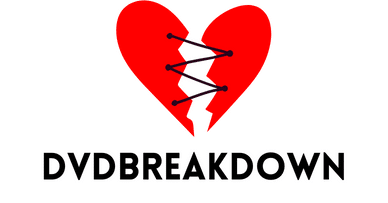How to Implement a Home Energy Monitoring System for Identifying Power Usage Trends?

In our modern world, intelligent management of energy resources has taken center stage. With the advent of smart technologies, the way we monitor, control and reduce energy consumption in our homes has revolutionized. But how do we implement these systems and more importantly, how do we decipher the data they generate? This is exactly what we’ll focus on in this comprehensive guide: unpacking the process of installing a home energy monitoring system, and understanding how it can help you identify power usage trends for more efficient energy consumption.
Understanding Home Energy Monitoring Systems
The first step to implementing a home energy monitoring system is to have a clear comprehension of what it is and how it works.
Dans le meme genre : What’s the Best Type of Fireplace for an Energy-Efficient Victorian Home Remodel?
A Home Energy Monitoring System (HEMS) is a technology that gives you real-time or near-real-time data on energy consumption in your home. It provides a detailed breakdown of energy usage by various appliances and devices in your household, facilitating an in-depth analysis of consumption trends.
These systems are typically IoT-based, that’s to say they are part of the ‘Internet of Things’. This means they connect to your appliances and your internet, transmitting usage data to a display or app, which you can then review and analyze.
Sujet a lire : How to Incorporate Upcycled Furniture into a Vintage-Inspired Bedroom?
A key feature of a home energy monitoring system is its ability to provide historical data. This allows you to compare energy consumption over time, identifying trends and patterns that could suggest inefficient use of appliances or highlight opportunities for energy reduction.
These systems aren’t just about monitoring, though. They offer the potential for automation. For instance, they can shut off appliances that are using too much power at particular times. In essence, they’re a significant step towards a fully automated and intelligent home.
How to Install a Home Energy Monitoring System?
The process of installing a home energy monitoring system is quite straightforward and can be done by any tech-savvy homeowner. However, it’s worth noting that some systems may require the services of a professional electrician.
First, you will need to purchase the monitoring system. These come in various shapes and sizes with different functionalities depending on the brand and model. The most important thing is to ensure that the system can handle the amount, and type, of appliances you wish to monitor.
Once you have your system, the installation process typically involves connecting it to your electrical panel. This will involve some minor electrical work, such as wiring the system into the panel. This is the part where a professional might come in handy.
After installing the hardware, the next step involves setting up the software. This will involve downloading an app or logging into a web portal, then connecting your system to the internet. In the software, you configure the monitoring system, adding each appliance you wish to monitor.
Identifying Power Usage Trends
Now that you’ve installed your home energy monitoring system, it’s time to take a look at your energy consumption patterns.
The system will provide a detailed breakdown of energy usage by individual appliance. This facilitates a comprehensive view of how energy is consumed in your home, enabling you to identify trends and patterns in your power usage.
By monitoring these trends, you can identify which appliances are the most power-hungry and at what times they consume the most energy. For instance, you might notice that your oven uses a significant amount of power during dinner time, or that your air conditioner consumes more energy than usual during the afternoon.
The data can also help you identify any anomalies. For instance, if an appliance is suddenly consuming more electricity than usual, it may be a sign that it’s malfunctioning and needs repair.
How to Make the Most of Your Home Energy Monitoring System?
Your home energy monitoring system is more than a tool for understanding your power consumption – it can also be a powerful instrument for reducing your energy usage and costs.
By identifying your peak times of consumption, you can adjust your usage to times when demand is lower, potentially reducing your energy costs. For instance, if you notice that your power consumption spikes in the early evening, you can try to shift some of your energy-intensive activities to the morning or late night.
In addition, your home energy monitor can help you uncover energy-wasting habits. By reviewing the data, you can identify appliances that are being left on unnecessarily, or devices that consume more power than they should.
Another great way to make the most of your home energy monitoring system is to combine it with a solar power system. By monitoring the amount of electricity your solar panels are producing and comparing it to your home’s consumption, you can determine the best times to use certain appliances to take advantage of free solar power.
The Bottom Line
Home energy monitoring systems are instrumental in identifying power usage trends and helping homeowners reduce their energy consumption. The data they provide can be vital in identifying energy-wasting habits and inefficient appliances, as well as in planning energy usage to coincide with lower-cost times or to take advantage of solar power.
Maximizing Energy Efficiency with Smart Home Techniques
Smart home techniques when combined with a home energy monitoring system can drastically improve a home’s energy efficiency. Smart home technology like smart thermostats, smart bulbs, and smart power strips can be set up to conserve energy during non-peak hours or when you’re not at home, thereby reducing your overall energy consumption.
Smart thermostats can be scheduled to reduce heating and cooling when you’re not at home, saving energy and money. Similarly, smart light bulbs use less energy and can be programmed to turn off when you leave the room or at specific times. Smart power strips can monitor energy usage of the gadgets plugged into them and cut off the power when these devices are not in use.
Home energy monitoring systems can integrate with these smart devices, giving you a detailed analysis of each device’s energy usage. For instance, you can track how much energy your washing machine uses per cycle and compare that to how much energy your dishwasher or refrigerator uses. You can then adjust the settings on these appliances or schedule them to run during low-demand times.
The integration of home energy monitoring systems with smart home technology can also help you to remotely control your home’s energy usage. For instance, if you’re away from home and forgot to turn off an appliance, you can do so through the system’s app.
Moreover, these systems can be linked with your Google Scholar account, providing you with access to scholarly articles on energy conservation and efficiency, to further enhance your understanding and management of home energy.
Conclusion: The Impact of Home Energy Monitoring Systems
The ability to monitor and manage home electricity consumption in real time has significant advantages. A home energy monitoring system not only provides a detailed view of your power consumption but also empowers you with the ability to control and reduce your energy consumption.
Through the identification of power-hungry appliances and by tracking usage patterns, you can make informed decisions about when and how to use your household appliances. This can lead to significant reductions in your energy bills and overall energy usage. Moreover, this conscientious approach contributes to environmental sustainability by reducing the carbon footprint of your home.
With the evolution of smart technologies and the Internet of Things, the capabilities of home energy monitors are expanding. The integration of these monitoring systems with other smart home devices offers even more opportunities for managing home energy use efficiently.
In conclusion, a home energy monitoring system is an investment that can pay for itself not just in terms of financial savings, but also by improving your home’s energy efficiency and contributing to a more sustainable future.
